Kjasif Smajlovic: The most honorable one among us
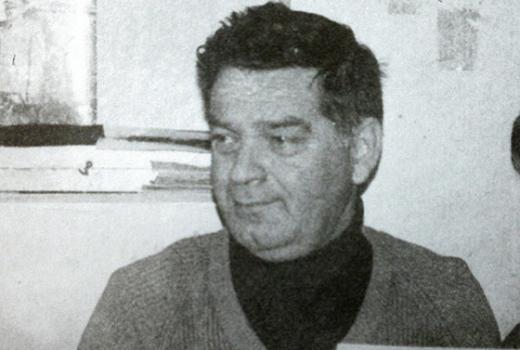
Kjasif Smajlovic: The most honorable one among us
On the 25th anniversary of the journalist Kjasif Smajlovic’s murder, we are publishing his last reports and a story about his life and journalism.
“I hear their footsteps, they’re approaching the office, I’m afraid this is my last report” – this is the last thing the Zvornik journalist reported to the Oslobodjenje bureau. On his last morning, aware that he is “alone” in the town filled with the infamous Arkan’s Men, he reported to the Tuzla office. The previous night, while he was getting his family ready to flee town, he foreboded his death to his son Nedim.
Kjasif Smajlovic’s perseverance and his murder, an example of the brutality of war toward the news profession, are not studied in journalism schools today, there is no memorial in Bosnia and Herzegovina on which his name is written, nor is anything named after him. His colleagues and family talked to Mediacentar about his life, his love for his profession, the principles he adhered to, and the imprint that Kjasif Smajlovic left behind.
First journalist in Zvornik
Zilha and Mustafa Smajlovic from Tokoljaci near Srebrenica had four sons and four daughters. Kjasif Smajlovic was born in 1940, he went to elementary school until the fourth grade in Krndici, and until the eighth grade in Srebrenica, like his other brothers and sisters.
He wrote his first articles as a high school student, in 1960 in Zvornik, for the papers Zadrugar and Tuzla-based Front Slobode. “Father was against his first journalist jobs, but later he was proud,” says his brother Sakib Smajlovic, a retired journalist from Srebrenica.
The paper Glas sa Drine was founded in Zvornik in the 60’s, operating as part of the Socialist Union, and its first editor and journalist was Kjasif Smajlovic, previously an accountant at a trading company for a brief period. Several journalists coming from this town were already working in other towns, but Kjasif Smajlovic, recall his colleagues, was the first journalist who wrote from the town on the Drina.
“Kjasif is the first journalist in Zvornik; it was something people always knew. It was a big thing. People looked at that like the municipality president,” says Mensur Krndic, former soundman at Radio Zvornik, which was founded in November 1976.
Glas sa Drine came out every two weeks, in the early 1970’s also as a supplement in Oslobodjenje, which meant greater visibility for both papers. An even bigger incentive for development of journalism in Zvornik was the opening of an Oslobodjenje bureau in town, in which a radio station had just been founded and which at the time was a small center of cultural events, a compulsory stop on the road between Sarajevo and Belgrade.
Kjasif Smajlovic left Glas sa Drine and became a reporter for Oslobodjenje from the Zvornik region. He was very dedicated to his work. Kemal Kurspahic, Oslobodjenje’s editor-in-chief from 1988 to 1994, remembers meeting Kjasif during gatherings of reporters in the Sarajevo newsroom in the 1970’s.
“Kjasif was a man of few words, but totally devoted to his work: he spoke about his experiences with what kind of reports contribute to bigger sales of the paper in a small town,” says Kurspahic.
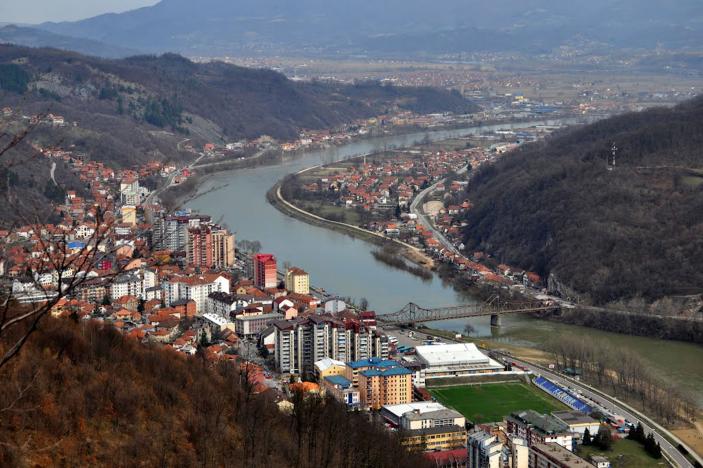
foto: Oslobodjenje.ba
While travelling to or from Belgrade, remembers Kurspahic, he never failed to drop by to see Kjasif Smajlovic.
“These small conversations of ours always somehow seemed to have two parts: first – an exchange of information on what is new in the newsroom and what Kjasif is working on these days, and then – a simple human conversation over a glass at the ‘Drina’ hotel bar. In these conversations, he mostly talked about family, about his children, whose education he was devoted to with total fatherly love. I know – from my conversations with Kjasif – that all of his dedication to work was always part of his concern for his children and their well-being.”
Kjasif’s daughter Alma Kapetanovic has lived in Sarajevo since the 80’s when she went to university. As a little girl, she had important chores on Sunday.
“The Glas sa Drine newsroom was in our house. I remember Aunt Gina typing, while brother and I carried film to be developed at Ivica and Faketa’s.”
She was upset as a little girl that her father was often not home: “I was jealous when he said he had three children – Alma, Netko and Glas sa Drine or Oslobodjenje or journalism. That was the meaning of his life.”
Her father taught her the importance of education, reading books and personal advancement in knowledge.
“He used to say: I’m one of rare people who are doing work they love.’ It was a way of life. We suffered and were jealous, but it was a responsible job,” remembers Alma Kapetanovic. “He didn’t talk a lot, but he liked company very much, he had a lot of friends and he could deal with things with a certain kind of charm. I’m exceptionally proud of that. He worked alone, but he had associates and he gave a chance to young people.”
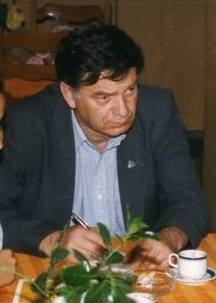 The Zvornik reporter’s reports, in Oslobodjenje usually with the byline “Kj. S.” or “Kj. Smajlovic”, featured news about education, culture, local economy, sports events and accidents, but also about unusual people.
The Zvornik reporter’s reports, in Oslobodjenje usually with the byline “Kj. S.” or “Kj. Smajlovic”, featured news about education, culture, local economy, sports events and accidents, but also about unusual people.
“’Kjasif’s territory,’ besides Zvornik, included Bratunac, Vlasenica and Srebrenica. He was respected in each of these towns and he stood out among all Oslobodjenje reporters by particularly caring about the paper’s sales in his area: on a daily basis he monitored and knew how many copies were sold and where and how many were left and he developed an unerring sense to assess which one of his articles would increase sales and worked together with the sales department to daily adjust the circulation to expected increased interest,” says the paper’s former editor-in-chief and adds that Kjasif thus contributed to the number of unsold copies in his area being lower than in any other place in Bosnia and Herzegovina.
Kjasif’s student, as Sead Hambiralovic – a Zvornik painter and journalist, pre-war editor of the paper of the Birac Alumina Factory – calls himself, says that Smajlovic left an indelible imprint and that his commitment to his profession until the very last moment was more than courage.
“Oslobodjenje was a system and to appear in the paper… that was big,” he says. “The rules I learned from Kjasif, I adhered to them. When he works, his sleeves are rolled up, he twirls his cigarette, purses his lips; it was a ritual, the magic of work. I learned from him at least three articles per page, those were sacred rules of journalism; you have to say in five sentences what you mean, headlines, sub-headlines, text-box…”
Mirjana Micic, a journalist from Zvornik, today a reporter from the town for BN television, remembers the 70’s and 80’s when she was studying journalism and writing her first articles.
“I always admired Kjasif Smajlovic. He was my role model. I realized for the first time what a journalist is when I saw Kjasif. When he praises me, I would be elated for three days,” she says. “I am sorry he ended up like that.”
Start of war and fall of Zvornik
Articles with the Kj. Smajlovic byline at the beginning of 1992 – when war was already in full swing in Vukovar, trouble was stirring in the media, and tension was growing among people across Yugoslavia, but most of all in B&H – covered events from the Zvornik municipality which, with its 60 or so villages, had a population of around 80,000.
“Kjasif, in an event that speeded up the breakup of Yugoslavia, showed how a small town reporter can make a report about a big event: It happened when the Milosevic regime imposed an embargo on imports and exports for Bosnia and Herzegovina. That day, Kjasif counted trucks that were stopped on the border of B&H and Serbia on both sides of the Drina; he talked to the drivers and wrote a report the same day about what kind of goods, in what amounts, remained blocked on the border and how that will reflect on the local markets. It was an exemplary report on how ‘high politics’ are conducted to the detriment of the ‘little man,’” remembers Kemal Kurspahic.
Some of Smajlovic’s last articles, besides reports on tense political relations between the local ruling parties, SDS and SDA, were stories about socially handicapped persons, unfavorable prices of rent in town, economic difficulties and, for example, plans to establish passenger railway traffic to Tuzla.
Two weeks before the start of war in Zvornik, the reporter’s reports from the region, in addition to covering current political tensions, spoke about plans to plant tobacco and clean a lake. There were also articles on meetings of intellectuals in town, about fear that had spread among the town people, about Serbs moving out, while in the last days Smajlovic’s reports described threats coming to the Oslobodjenje bureau.
In the paper’s 8 April edition, Smajlovic reported that Zvornik was dividing and the next day that four of Arkan’s Men had been captured. That same day, also a small report saying that Zeljko Raznatovic Arkan had given an ultimatum to surrender weapons “or Zvornik will be another Bijeljina.”
Oslobodjenje’s then editor-in-chief recollects the Zvornik reporter’s last reports and the principles he adhered to. Using the example of an article published under the headline “Four Arkan’s Men captured,” Kurspahic says that the sub-headline, “Prisoners said they arrived in Zvornik to prevent arming of Muslim people in region,” shows better than anything else what kind of man and journalist Kjasif Smajlovic was.
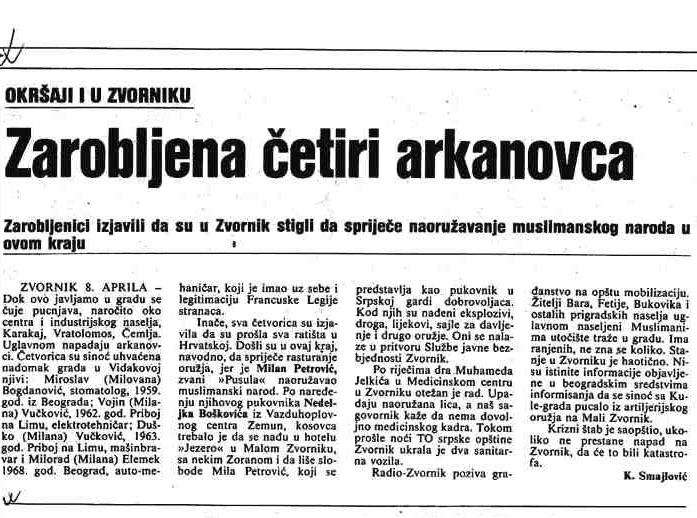
“It’s striking in that it shows how much Kjasif was committed to the rules of the news profession, for example the rule that the ‘other side’ must also be heard. He was guided by principles of pure professionalism which demand that the journalist give readers all facts and certainly also listen to the ‘other side.’ That’s why he also reported the words of those who came as a precursor to the atrocities and whose units would just a day later brutally execute him.”
Mensur Krdic, the Radio Zvornik soundman, and Gordana Imsirovic-Mandic, the editor, were airing an open program at the time. All important news that came in was delivered to listeners. Residents were coming and asking for a loudspeaker for rallies in which they sent out the message that they did not want war, he recalls. It was tense. The radio editor called on residents to defend their town.
“She called on residents and ‘all those who love this town’ to go to Debelo Brdo (north of Zvornik, author’s note) and defend the town. Already on 8 April, Gordana couldn’t leave her home,” remembers Krndic who was alone on the radio’s premises that last day. “Goca was an exceptionally good and respected journalist.”
Committed to her profession and the residents, Gordana Imsirovic Mandic was among numerous prominent people from Zvornik whose fates were unknown. The journalist Hasan Hadzic in an article for Dani wrote that the editor, who would be remembered in the history of journalism by her public appeal: “Residents of Zvornik, the criminals are coming; come out to defend our town and our children!,” barely managed to save herself. Krndic remembers that on 8 April he was working alone at the radio station, without the editor who, as he later found out, had been forcibly prevented from coming. Many of their co-workers had stopped coming to work long before that.
“I was at the radio, I was playing music. There was no one else. On 8 April, at around 11, Kjasif came to the radio. He asks where the journalists are. We had made an agreement to stop the program if war erupted, but there was no one. While in the editing room with me, he was nervous. He enters the studio to say something, then decides not to. He goes across to the newsroom. He was smoking a lot. He was very nervous that last day. I told him to stay, ‘we are stronger together,’ but he said he must go to dispatch for Oslobodjenje.”
Nedim Smajlovic remembers his last encounter with his father.
“The last time I saw him was on 8 April ’92, at around 19.30. He came home to change his clothes and had dinner. He took me outside, probably so that mother wouldn’t hear, or else he wanted to let me know in private how bad the situation in Zvornik was. He asked me what I was planning and I replied that I would probably go toward Kula Grad, which he approved of, saying it was a good idea. Then I asked him: What will happen to you? He looked at me, placed his right hand on my shoulder and said: All sorts of things have been happening here in the last several days and the truth will come out when my colleagues find me. He hugged me and said: Just don’t fall into their hands live.”
He accompanied his wife and son across the Zvornik iron bridge and then returned to the Oslobodjenje bureau and finally, according to statements by rare witnesses, he fell into their hands live. On 9 April. Before that he called a colleague in Tuzla, the secretary Sevleta Ahmedinovic, who wrote down his last report. “Hurry up, Sele, take this news! They are approaching the bureau…”
Unappealable verdicts for war crimes in Zvornik established that Serb Territorial Defense, together with paramilitaries from Serbia, was in early April getting ready to take over territory along the border. Although talks were still going on among the SDA, SDS and JNA (Yugoslav People’s Army) on preventing a possible attack, on 3 April a long convoy of Serbs left town, while two days later the Serb TO (Territorial Defense) was mobilized on orders of the Serb Crisis Staff.
“At approximately the same time, paramilitaries started arriving in the municipality, among them ‘White Eagles,’ ‘Yellow Wasps’ and ‘Red Berets.’ They were called in by Branko Grujic, president of the Zvornik Crisis Staff, who later, by decision of the Bosnian Serbs presidency dated 17 June 1992, became a member of the War Committee in Zvornik. On 5 and 6 April 1992, members of Serb police and paramilitary forces – mostly Arkan’s Men – set up barricades all over the municipality, police were divided along ethnic lines in accordance with Momcilo Mandic’s dispatch, while Serb members of the Zvornik SJB (Public Security Station) moved to Karakaj, where the Serb Crisis Staff was based,” according to an account of events by BIRN B&H editor Denis Dzidic, based on court verdicts related to Zvornik.
“In the night of 7 April, the SDA also erected barricades on the bridge connecting Zvornik with Serbia. When the shooting broke out on 8 April 1992, the barricades were temporarily removed and hundreds of Muslims and Serbs left the municipality. Serb civilians were told there was a plan to murder them, while some were forced by members of Serb paramilitary forces to leave their homes. That same day, members of various Serb forces – police, TO, JNA and Arkan’s Men – carried out an attack on Zvornik which, at least partly, was launched from the territory of Serbia. Tens of Bosniaks were killed in the attack, most of them civilians. After Serb forces assumed power, hundreds of Bosnian Muslim civilians left the area, while others were imprisoned, regularly beaten, tortured and murdered.”
Who will call in?
During the 24 years it took to find Kjasif Smajlovic’s remains, family and friends came across different versions of what had happened to him. It was believed for a long time that he had been thrown into a limekiln, which would mean he would not have a dignified burial.
The son Nedim, who was on the other side of the Drina after the fall of Zvornik, in Mali Zvornik, found out several days later that his father had been murdered, which he managed to report to the Oslobodjenje newsroom. Several days after the fall of Zvornik, it was possible to go into town, so Kjasif’s wife, as Alma Kapetanovic recounts her mother’s story, went back to look for her husband or to find out any information, but some passers-by were already expressing their condolences to her for his death.
“We were worried because he had stopped calling in and we were hoping that he was hiding somewhere safe, until 25 April when his son called me at the newsroom desk to tell me that his father had been murdered. I tried to console him with the hope that he might be somewhere safe, but he said two people had confirmed to the family that they had seen him being carried out of the newsroom, dead,” says Kemal Kurspahic.
Kjasif’s daughter Alma Kapetanovic, who was in Kresevo with her husband during the war, learned about her father’s death, she says, in the cruelest way, as a result of lack of telephone connections.
“By listening to the news on TV. Even today, the voice of the announcer Branko Klubicka echoes in my mind, saying in the Dnevnik news program that the information had been confirmed that Oslobodjenje’s journalist Kjasif Smajlovic had been murdered in Zvornik. I collapsed; for me, the whole world shattered.”
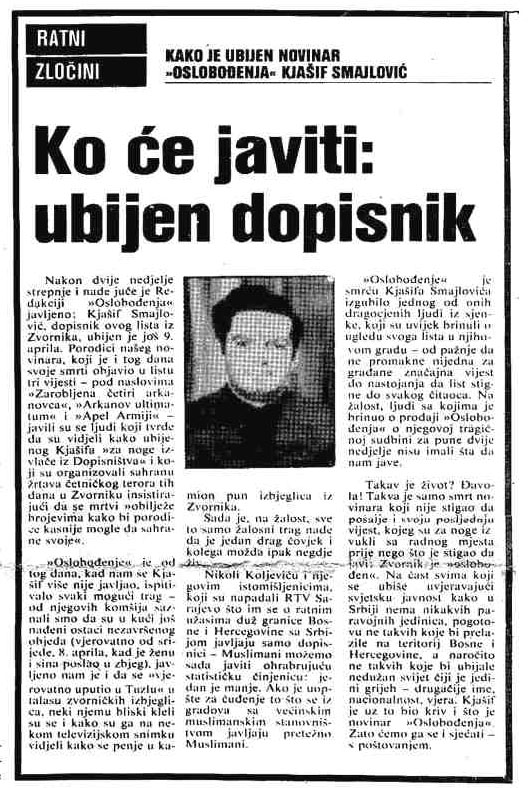
And on 26 April the news was broadcast into the world and Oslobodjenje reported: “Who will call in: Reporter murdered,” while a commemoration for their murdered colleague was held in the Sarajevo newsroom.
News from the Zvornik region, as much as was available, afterwards was mostly reported to Oslobodjenje by a journalist from Tuzla, Vehid Jahic, who for years reported the rare information that existed about the murder of his colleague.
“In just several months of killing and expulsion as part of ‘ethnic cleansing’ across Bosnia and Herzegovina, there were no conditions whatsoever for journalists to work, nor could journalists cross over to the ‘other side.’ We received some accounts of what was happening from talking to expelled people and refugees, in meetings with foreign journalists and diplomats who witnessed some episodes of ‘ethnic cleaning,’ and we compensated for our limited insight into day-to-day developments by publishing international agencies’ reports from the scene,” recollects the former editor-in-chief of Oslobodjenje.
For years afterwards, family and co-workers inquired and tried to get any information on what exactly had happened to Kjasif and where his remains were located.
“Later, of course, we inquired among people who were able to see the murder and we heard that he was first tortured, actually beaten on the head and body with a typewriter and then shot twice and dragged out of the bureau,” says Nedim Smajlovic. “On the desk and all over the bureau, there were traces of blood and a shoe was left behind, along with a bloody trail where he was dragged outside. Identification confirmed that, since his head was shattered to such an extent that parts of the scull couldn’t be put together and the upper jaw was also missing. His left leg was broken and according to the identification team’s statement, injuries to the scull were made with a blunt object.”
Zvornik artist and journalist Sead Hambiralovic says that after the war he received a letter from Germany, unsigned, in which the anonymous sender described the torture that Kjasif Smajlovic endured, which he heard as he was nearby.
“An unsigned, anonymous letter, which ends with ‘that’s how your friend Kjasif Smajlovic was killed.’ The man was in a basement near the building of the Oslobodjenje bureau. He saw or heard Kjasif being taken out, he heard his last words: “Don’t, I have children.” Then came the burst of gun-fire,” narrates Hambiralovic. “Is it possible to kill a journalist like him?”
Non-prosecution of crimes and prosecutor’s office
“That morning, 9 April, when paramilitaries from Serbia – already notorious for crimes committed in Vukovar and other execution sites in Croatia – were crossing the Drina and starting their bloody feast in Zvornik, Kjasif called the regional bureau in Tuzla and, delivering his last short report on the fall of Zvornik to the secretary Sevleta Mujkic, told her he feared they were coming for him. ‘I hear their footsteps.’ When she asked him why he had not fled to safety, he replied: ‘Because I’m a journalist,’” recounts Kemal Kurspahic.
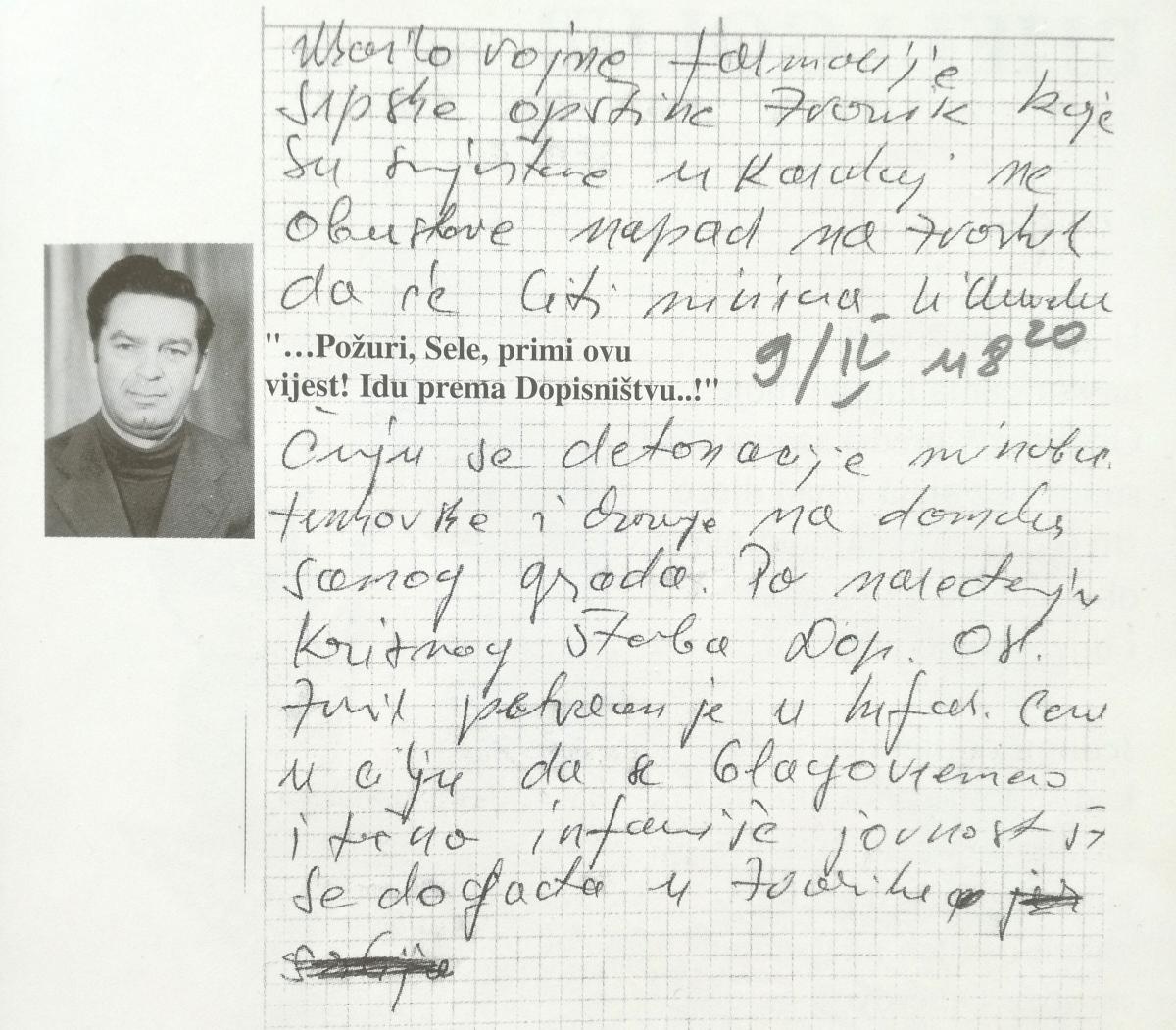
Photo: From the book “Novo sunce” (New Sun), Sead Hambiralovic, Tuzla, Norrkoping, 2002. / Fascimile of last telephone message to Sevleta Ahmedinovic, secretary of the Tuzla Bureau
“His response to imminent lethal danger, perfectly demonstrating the journalist’s self-respect, was a big moral obligation and inspiration to all of us at Oslobodjenje to continue – under the gravest conditions of everyday terror, from an atomic shelter of a totally razed building on the frontline of defense of Sarajevo and Bosnia and Herzegovina – to produce the paper every day of the three-and-a-half-year siege.”
The Hague Tribunal convicted only two people for crimes in the Zvornik region – Momcilo Krajisnik and Biljana Plavsic, top people on the political level in the Republika Srpska in 1992. These crimes were also attributed to Slobodan Milosevic and Zeljko Raznatovic Arkan, but both died before sentencing, says Denis Dzidic of BIRH B&H, an organization that has been covering war crimes trials for more than 10 years.
“The majority of the prosecuted cases for the Zvornik region took place before the Belgrade Higher Court. The court convicted Branko Grujic, president of the Zvornik Crisis Staff, to six years in prison for crimes in the town. The Humanitarian Law Center in its analysis cites a number of illogicalities related to this proceeding,” says Dzidic. “The Center also pointed out that Grujic received an inexplicably low sentence. Several members of the Yellow Wasps were also prosecuted in Serbia for crimes in Zvornik, as were other people, but they were convicted to rather low prison sentences. Speaking about the Court of B&H, there were many small cases related to crimes in Zvornik – what is interesting in relation to these proceedings is that there were many acquittals.”
Kjasif Smajlovic’s remains were found in Zvornik more than 24 years after his murder. Bodies found in a mass grave were in black military bags used by the former JNA.
Boris Grubesic, spokesman for the Prosecutor’s Office of B&H, said the murder of the journalist Kjasif Smajlovic is part of a case at the Special War Crimes Department related to war crimes in the Zvornik region, which is pending and currently in the reporting stage, and Smajlovic is among the victims.
“With regard to the Kazanbasca mass grave, the remains of some 15 victims from the Zvornik region were found at the site during a trial exhumation: in the spring of 2012 the remains of three bodies were found, while during an exhumation carried out in the fall of 2016 another 11 bodies were found,” says Grubesic.
‘Because I’m a journalist’
Aware of the danger and his certain death, Kjasif Smajlovic decided to stay in Zvornik and report the last news.
“Kjasif was much, much more than is shown by the fact that he was the first journalist murdered in Bosnia and Herzegovina at the very beginning of the war. Why didn’t he leave Zvornik when other people did and when the looming evil became evident? He himself answered that question when he was delivering his last report to Oslobodjenje through the Tuzla bureau: ‘Because I’m a journalist.’ He could have left when his family did. If he had done that, no one could have reproached him for anything. To leave before the arrival of murderers and criminals is not cowardly,” said Mehmed Halilovic, a former journalist of Oslobodjenje. “But Kjasif made a choice few of us could, which no one could have demanded of him. He decided to stay and report.”
The brutal murder of Kjasif Smajlovic, his life road and his plight are full of symbolism and, according to Borka Rudic of the BH Journalists Association, they enable us to look at journalism in its essence as a battle for the truth and individual courage.
“On a symbolic level, Kjasif Smajlovic’s plight was a targeted murder of the truth and a way to prevent any chance that the truth will be spread through the media. The humanist and empathic side of journalism, which Kjasif Smajlovic fostered and applied in his work, to me is the archetypal principle on which our profession should still rest today,” she says.
Sakib Smajlovic, today a retired journalist who started writing by following in his brother’s footsteps, says that Kjasif became a legend in a profession that is actually almost gone.
“The attitude of the journalist community to the moral legacy and profession left by Kjasif Smajlovic is the main reason for writing a book about my brother. Kjasif isn’t mentioned in any journalist meetings or journalism schools and few media outlets remember the anniversary of his death. Kjasif found his final resting place on 2 October 2016 and I’m afraid he will thus be forever forgotten.”
Kjasif’s son Nedim says that journalism in B&H does not seem to be as great as it once was and that journalists do not cherish the memory of their colleague.
“He could have left like many others, but he didn’t, because he didn’t want to betray his profession and journalism, but nearly everyone betrayed him,” he says. “But I’m proud of my father; he’s my hero.”
Debt to Kjasif
“With his choice and his work, Kjasif indebted us. I don’t know if we have ever repaid him the way he deserves. We probably haven’t,” maintains Mehmed Halilovic. “The least we can do is not forget the message he left behind and enrich our dedication to our profession with the human qualities that our Kjasif possessed. ‘Because I’m a journalist.’ These four words are Kjasif’s legacy to us.”
“I’m afraid that we have allowed ‘peace’ to trample us and that few people want to analyze, talk about and recall the courage and tragic death of Kjasif Smajlovic, as well as the contribution of many other journalist colleagues and media professionals,” says Borka Rudic. “We still don’t know the circumstances surrounding the deaths of Kjasif Smajlovic, the first journalist victim in B&H, or many other journalists and media staff killed during the war, all the way to Jadranko Bozinovic, the last journalist victim, who was murdered on his doorstep in Zavidovici, let alone someone being indicted or convicted of these brutal murders and crimes.”
According to data collected thus far by BH Journalists, 45 people died, were murdered or disappeared as journalists or media staff under unexplained circumstances.
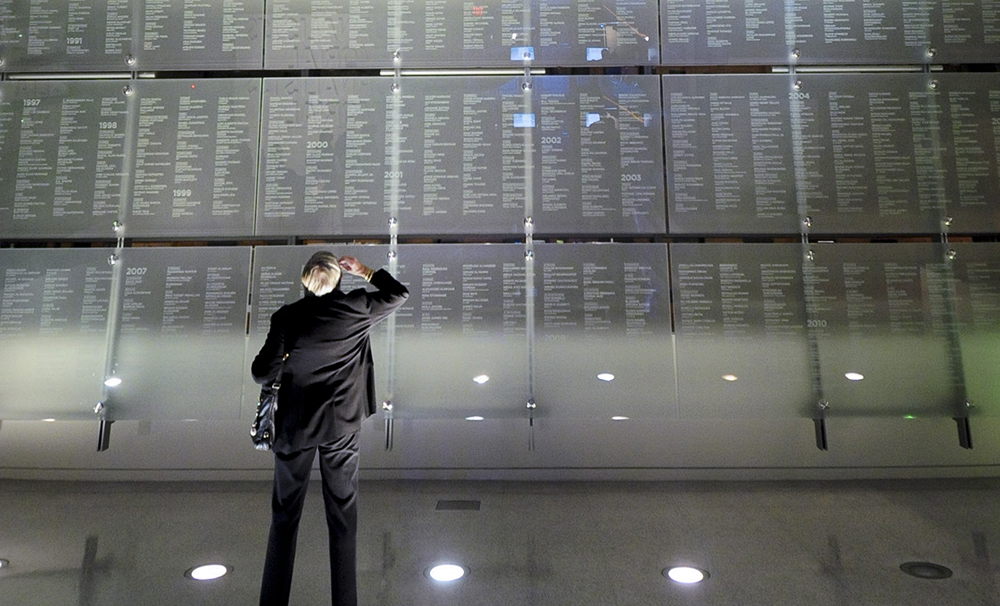
Photo: Newseum
Kjasif Smajlovic’s name is written on the Journalists Memorial that honors slain journalists in the Newseum in Washington.
“Kjasif Smajlovic’s example deserves an honorary place in the history of Bosnian and Herzegovinian journalism and an important chapter in journalism and ethnics classes in schools and universities,” says Kemal Kurspahic.
In the gallery below, you can read some of Kjasif Smajlovic’s last reports, published in Oslobodjenje, and news about him after he was murdered.
(Please wait until the content is loaded.)




